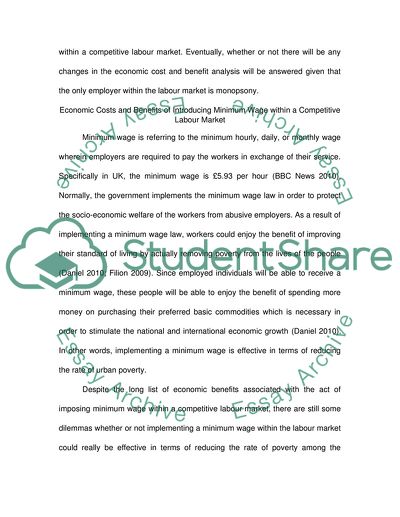Cite this document
(“Economic Costs and Benefits of Introducing Minimum Wage in a Essay”, n.d.)
Retrieved from https://studentshare.org/macro-microeconomics/1571726-examine-the-economic-costs-and-benefits-of-the-introduction-of-a-minimum-wage-in-a-competitive-labour-market-does-your-answer-change-if-the-only-employer-in-the-labour-market-is-a-monopsony
Retrieved from https://studentshare.org/macro-microeconomics/1571726-examine-the-economic-costs-and-benefits-of-the-introduction-of-a-minimum-wage-in-a-competitive-labour-market-does-your-answer-change-if-the-only-employer-in-the-labour-market-is-a-monopsony
(Economic Costs and Benefits of Introducing Minimum Wage in a Essay)
https://studentshare.org/macro-microeconomics/1571726-examine-the-economic-costs-and-benefits-of-the-introduction-of-a-minimum-wage-in-a-competitive-labour-market-does-your-answer-change-if-the-only-employer-in-the-labour-market-is-a-monopsony.
https://studentshare.org/macro-microeconomics/1571726-examine-the-economic-costs-and-benefits-of-the-introduction-of-a-minimum-wage-in-a-competitive-labour-market-does-your-answer-change-if-the-only-employer-in-the-labour-market-is-a-monopsony.
“Economic Costs and Benefits of Introducing Minimum Wage in a Essay”, n.d. https://studentshare.org/macro-microeconomics/1571726-examine-the-economic-costs-and-benefits-of-the-introduction-of-a-minimum-wage-in-a-competitive-labour-market-does-your-answer-change-if-the-only-employer-in-the-labour-market-is-a-monopsony.


